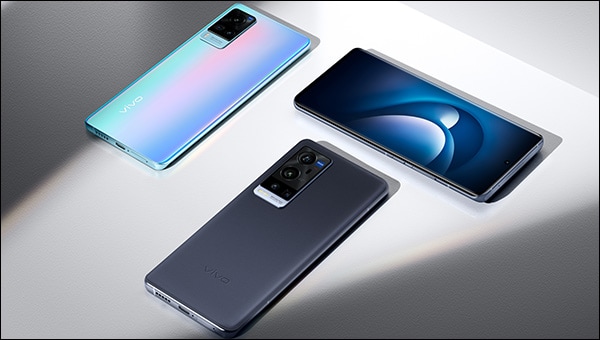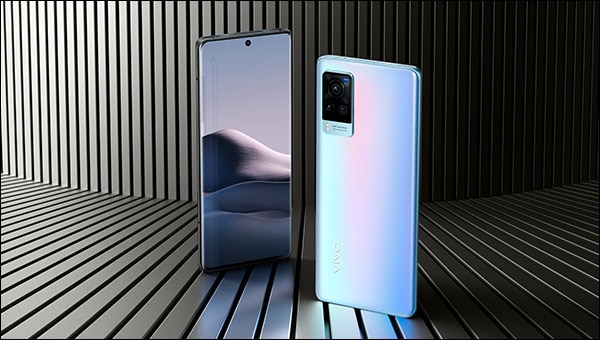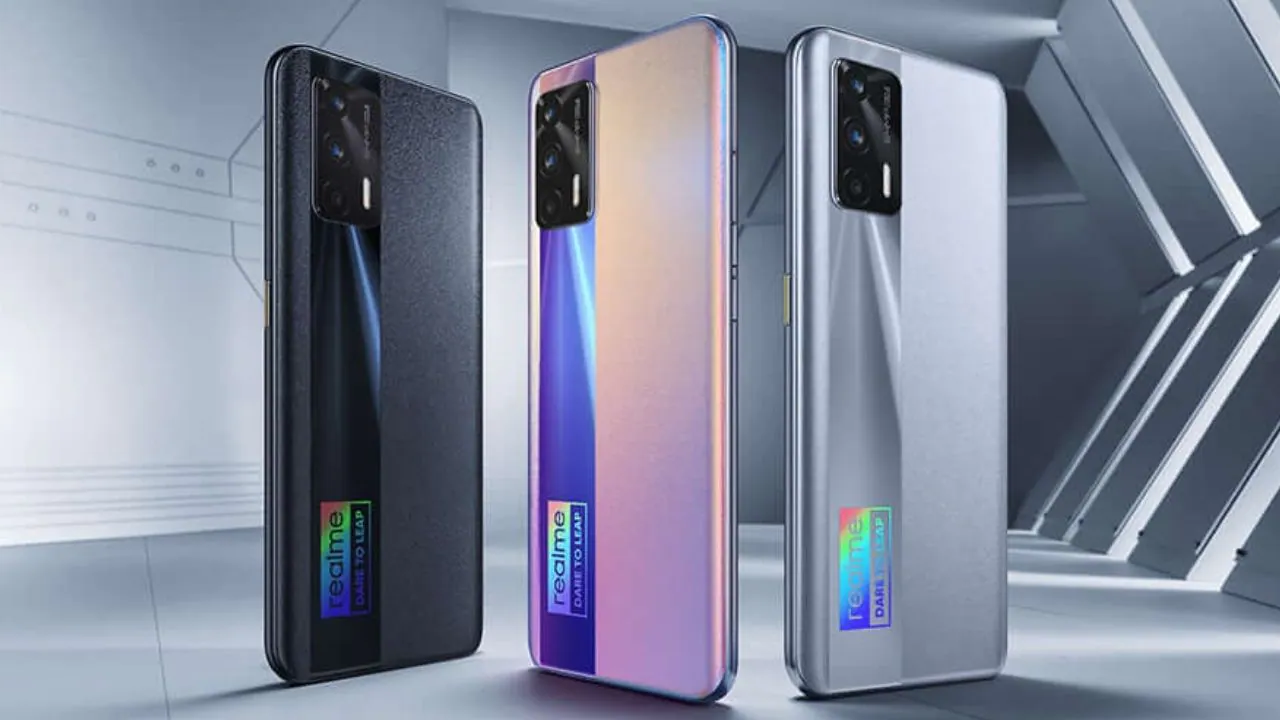FirstPostApr 03, 2021 15:32:05 IST
We’ve reached a point with smartphones today where specs don’t matter any more. The Snapdragons, Mediateks, and Exynoses of this world are just so good that there’s hardly any reason to worry about clock speeds and RAM. Most phones today have great displays, usually AMOLED, fantastic batteries, and unique, eye-catching designs.
The real battleground then, lies in the camera department, and boy have manufacturers stepped up. In the sub-40k category, home to the budget flagships of this era, we see smartphones with cameras and features that rival Rs 1+ lakh flagships from mere months ago. Large sensors and even larger sensors are fast becoming the norm, and new purchases could perhaps be decided by megapixel and camera count rather than number of CPU cores and gigabytes of storage.
Let’s take a look at some of these phones:
vivo X60
Just like its bigger brother, the vivo X60 Pro, the X60 features a rear triple camera array comprising a massive, 48 MP f/1.8 primary camera (26 mm), a 13 MP f/2.5 portrait camera (50 mm), and a 13 MP f/2.2 120° ultra-wide (16 mm). The sensor and pixel sizes remain the same across both cameras, with the X60 dropping the Pro’s gimbal stabilisation system in favour of a more traditional OIS system, and offering a slightly slower f/1.8 wide-angle lens (vs the f/1.5 on the Pro). The selfie camera remains the same at 32 MP f/2.5 with a 1/2.8-inch sensor and 0.8 µm pixels.
The megapixel count and pixel size may be a bit lower than what you’ll see from some of the competition in this price bracket, but vivo’s opted for larger sensors — a 1/2-inch sensor in the primary, and 1/2.8-inch sensors for the rest — which should translate to excellent image quality in any kind of light.
Opting for the X60 will not only give you the same image quality of the X60 Pro, it’ll also save you a pile of cash. The lens is a bit slower than the one of the Pro, but it’s still a Zeiss lens and image quality will be largely unchanged. Features like “Panorama Night Mode”, HDR night portraits, and “Extreme Night Vision 2.0” are still present.
The display is a large, fast, 6.56-inch AMOLED that operates at 120 Hz and is HDR10+ certified, making for a great multimedia experience.
At just 7.36 mm thick and with a weight of 176 g, this glass-backed phone is pocketable and not as heavy as one might think.
Powering this phone is a powerful Snapdragon 870 from Qualcomm. In the base model, that chip is paired with 8 GB of RAM and 128 GB of fast, UFS 3.1-rated storage. There’s also a 12/256 GB option. The phone supports 5G, and you also get support for WiFi 802.11 a/b/g/n/ac and Bluetooth 5.1 with A2DP, LE, and aptX HD for high quality wireless audio streaming.
The large, 4,300 mAh battery supports 33-Watt fast charging via USB-C.
OnePlus 9R
The OnePlus 9R is an excellent budget flagship phone that takes the best elements of the 9 Pro flagship and waters them down to fit in the sub-40k budget.
As with most phones in this category, the 9R is powered by a Snapdragon 870 that’s paired with 8 or 12 GB RAM and 128 or 256 GB of storage. You get the usual bells and whistles including support for 5G, Wi-Fi ac, Bluetooth 5.1, A2DP, aptX, etc. It also features a 6.55-inch FHD+ AMOLED display operating at 120 Hz.
With the 9R, OnePlus has gone with a quad-camera array on the rear that features a 48 MP f/1.7 wide (26 mm), a 16 MP f/2.2 ultra-wide (14 mm), a 5 MP f/2.4 macro, and a 2 MP f/2.4 depth-sensor. Sadly, there’s no tele/portrait lens to be found here.
The selfie camera is a 16 MP f/2.4 system with a 1/3.06-inch sensor having 1 µm pixels. The sensor is a bit smaller than the one on the vivo X60, and half the resolution, but the larger pixel size and slightly larger aperture should help with low light performance.
The OnePlus 9R features a dual-cell 4,500 mAh battery that can charge to 100% in a mere 39 minutes using a supported 65-Watt charger.
Oppo Reno 5 Pro
The standout feature of this phone has to be its fantastic OLED display. It’s only 90 Hz, which gamers might not appreciate, but it’s an HDR10+ certified display that can hit an eye-watering peak brightness of 1,100 nits, which is in Apple iPhone 12 territory. HDR content will look amazing.
Display aside, you get an unusual choice of SoC, the Mediatek MT6889Z Dimensity 1000+, and it’s paired with 8/12 GB RAM and 128/256 GB of storage. The phone supports 5G, Wi-Fi 6, and the usual Bluetooth options including 5.1, A2DP and aptX. USB connectivity is also good as the Reno 5 Pro supports the faster USB 3.1 standard.
The cameras are also interesting and unusual. Oppo’s focused almost entirely on the primary camera, opting for a 64 MP f/1.7 unit with a large 1/1.73-inch sensor with 0.8 µm pixels. The ultra-wide, sadly, is a much smaller 8 MP unit with an f/2.2 aperture, a tiny 1/4-inch sensor, but slightly larger 1.12 µm pixels. You should get decent low-light performance from this camera, but clearly, not much resolution. A pair of 2 MP f/2.4 macro and depth sensing cameras round out the rear camera system.
The selfie camera is a competitive 32 MP f/2.4 system with an X60-like 1/2.8-inch sensor and 0.8 µm pixels.
The phone’s 4,350 mAh battery supports SuperVOOC 2.0 and can handle 65 W of power. It also supports reverse charging.
Samsung Galaxy S20 FE
Released in September last year, the S20FE is still a solid option for those looking for a sub-40k smartphone in 2021. It’s an older phone, but you get solid specs, great cameras, and a lovely display to work with, not to mention the bragging rights associated with owning a Samsung phone.
The phone’s 120 Hz, FHD+ AMOLED is among the best smartphone displays around, and while you don’t get a more efficient Snapdragon 870 or equivalent SoC, the Exynos 990 in here is still powerful and will handle any tasks you throw it. Storage options go up to 256 GB and RAM to 12 GB. The base model only comes with 6 GB RAM, however.
The Exynos model lacks support for 5G and only supports Bluetooth 5.0. It’s also lacking any support for aptX HD, which is a bit disappointing if you use an aptX-certified headset.
Compared to the competition, the primary camera offers a much lower resolution of 12 MP. However, as with Apple’s iPhones, this lower resolution is a result of relatively huge 1.8 µm pixels on a large, 1/1.76-inch dual-pixel PDAF sensor with OIS support. 48 MP is 48 MP, but the larger pixels in the sensor will ensure a much cleaner image in low light, and especially when engaging night mode. You won’t be able to crop in as much so you’ll have to ensure good framing before shooting.
The rest of the cameras are alright, but do fall behind the competition. There’s a 76 mm equivalent 8 MP telephoto with an f/2.4 aperture and smaller 1/4.5-inch sensor, and a 12 MP f/2.2 ultra-wide with 1.12 µm pixels on a 1/3-inch sensor. The selfie camera is a 32 MP f/2.2 unit on a 1/2.74-inch sensor with 0.8 µm pixels.
The phone’s 4,500 mAh battery only supports 25 W charging via USB-C, but 15 W wirelessly. It can also do reverse wireless charging at 4.5 W.
Xiaomi Mi 10T Pro
With this phone, Xiaomi’s gone all out on the primary camera, offering one of the fastest, highest resolution cameras available on a smartphone today. While a great phone regardless, Xiaomi did have to make several compromises on other fronts, however, so you need to be clear about your expectations before picking up this phone.
But first the camera. The primary camera is a 108 MP unit with a large, 1/1.69 aperture on a 1/1.33-inch sensor and 0.8 µm pixels. This camera supports PDAF and OIS. Now while the overall resolution is ridiculously high, it’s worth noting that the sensor size is smaller than the one on the vivo X60 and the pixel size is a lot smaller than the ones on the S20 FE. You’re getting resolution, which is great for daylight shots, but you’re also losing out slightly in the low-light department.
The rest of the setup comprises a 13 MP f/2.4 ultra-wide with 1.12 µm pixels and a 5 MP f/2.4 macro with a tiny 1/5-inch sensor and 1.12 µm pixels. The latter does at least have AF. The selfie camera is also smaller than that of the competition, offering a 20 MP from a 1/3.4-inch sensor with 0.8 µm and an aperture of f/2.2.
Unlike most phones in this price rangeS, Xiaomi has taken the iPhone 11 approach and gone with a high quality LCD display instead of an AMOLED. This FHD+ LCD is rated at 144 Hz, so it’s slightly faster than some AMOLEDs, and it’s a wide-gamut panel, but it can’t compete with the contrast ratio of a true OLED.
The phone uses the still powerful Snapdragon 865 SoC and pairs it with either 8 GB RAM and 128 GB storage or 8 GB RAM and 256 GB of storage. Connectivity is superb and features support for the latest Wi-Fi 6 and Bluetooth 5.1 standards. There’s also support for aptX HD and aptX Adaptive for superb wireless audio.
A large 5,000 mAh battery provides power. It supports 33 W fast charging and the USB PD 3.0 standard.
And there you have it, our list of the best smartphones under 40k. Hopefully, we’ve helped you make an easy decision on your next smartphone purchase. Happy shopping!












